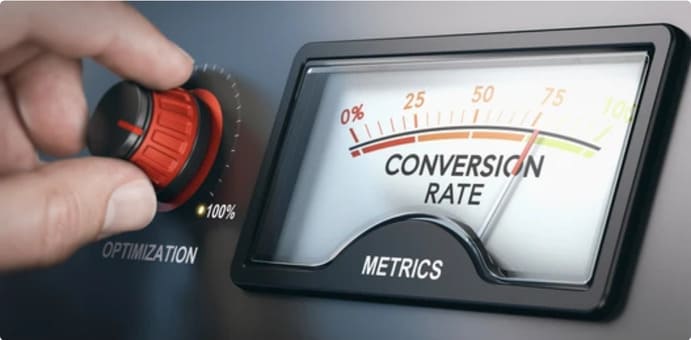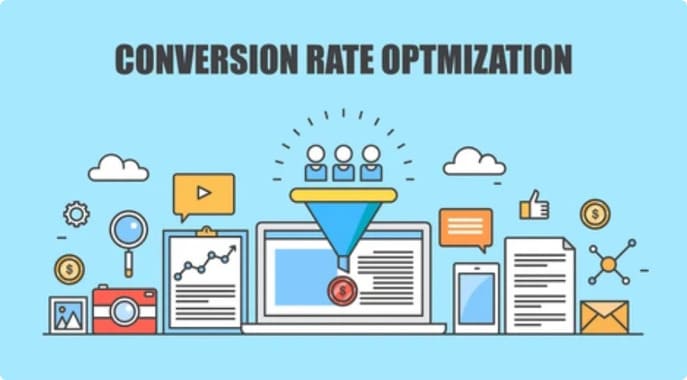What Is Conversion Marketing With Steps To Improve Conversion Rates
Info About Conversion Marketing

If you want your website or marketing campaign to actually drive business results, you’ll run into the term “conversion marketing” pretty quickly.
In my own work building websites and writing ads, I’ve found that understanding conversions—and focusing on increasing them—makes a real difference in how successful my projects turn out.
So, what is conversion marketing? Conversion marketing is all about motivating people to take specific actions that matter to your business.
Here, I’ll break down the details of what conversion means, why it matters, some popular strategies, and actionable steps to improve your own conversion rates in digital marketing.
Click here for my #1 recommendation for making money online while working from home
What Does Conversion Mean in Marketing?
When I talk about conversions in marketing, I’m referring to any action that you want someone to take on your website or in response to your campaign.
A conversion could be almost anything: signing up for a newsletter, filling out a form, buying a product, downloading a resource, or even clicking a specific button.
Marketers often track different types of conversions depending on their goals.
For example, an online store will probably look at completed purchases, but a business that offers consulting might focus more on people booking free calls.
In both cases, getting more conversions helps bring in more leads and sales, which is really important for growing a business.
In most cases, you’ll see a conversion rate expressed as a percentage. That’s the number of completed actions (conversions) divided by the number of visitors.
If 1,000 people land on your site and 50 of them buy something, your conversion rate would be 5%. Tracking that number tells you a lot about whether your marketing is working the way you want.
Understanding the context behind that number is just as important as the number itself. Tracking conversions over time allows you to see patterns, spot issues, and measure the impact of your marketing efforts.
What Is a Conversion Strategy?
Having a conversion strategy means you’re intentionally planning how to turn visitors into leads, customers, or other valuable contacts.
I’ve learned that guessing rarely works. Instead, I focus on identifying what matters most (like purchases or signups), then removing as many roadblocks as possible to those actions.
Some conversion strategies are straightforward, while others use more advanced techniques. Some of the main components I rely on include:
- Clear Calls to Action (CTAs): Direct language and visible buttons that make it obvious what to do next.
- Persuasive Landing Pages: Pages built specifically to encourage a single action, with focused messaging and no distractions.
- Simplified Forms: Only asking for the information you truly need, reducing friction that might cause someone to leave.
- Trust Signals: Customer reviews, security badges, testimonials, and other credibility markers that reassure visitors.
- A/B Testing: Running experiments with different headlines, images, or layouts to see which version gets better results.
My conversion strategies often include email follow-ups to remind visitors about special offers or unfinished orders, and remarketing ads to reach people who have already shown interest.
By focusing on what encourages people to take action, I find that campaigns become more effective over time.
It’s also valuable to map out the customer journey from the first touchpoint to conversion. Thinking about each step helps you uncover where people may lose interest or need more information.
Addressing those points often leads to higher conversion rates across your site or campaign.
Keeping lines of communication open, whether through chat support or timely emails, helps guide visitors toward becoming leads or customers.
Click here for my #1 recommendation for making money online while working from home
Which Conversion Strategy Is Best?
There isn’t a single strategy that works for every website, product, or campaign. In my experience, the best conversion strategy really depends on your goals, your audience, and the specific actions you want someone to take.
For an online store, a short and simple checkout process might be most effective. For a service business, a detailed landing page explaining benefits and featuring testimonials might work better.
I’ve seen the most success by testing several approaches and tracking results closely. For example, I might try two versions of a landing page—one with a video introduction and one without—and measure which converts better.
For some clients, adding live chat has helped address customer concerns in real time, which increased signups by making people feel heard.
If you’re starting out and not sure where to begin, I recommend focusing first on these basics:
- Make your main call to action easy to find and clear about the benefit
- Simplify your signup or purchase process as much as possible
- Add trust elements, like testimonials or money-back guarantees, to reduce doubts
- Use analytics tools (like Google Analytics) to see where people drop off, then make improvements in those areas
The “best” strategy is always the one that connects with your audience and fits your offer. Good conversion strategy is about ongoing improvement and staying focused on what your customers actually want.
Sometimes, little experiments—such as updating button text or offering a limited-time discount—will surprise you with big improvements.

How to Improve Conversions
I spend a lot of time looking for small improvements that make a big difference in conversion rates. Here are practical steps I use every day:
- Speed Up Your Website: Slow sites lose conversions. Even a one-second delay can cause visitors to leave. I use tools like Google PageSpeed Insights to pinpoint and fix slowdowns.
- Use Clear and Engaging Headlines: A strong headline instantly tells visitors what they’ll get and why they should care. I aim to keep my language simple and direct.
- Limit Distractions: Every extra option or link on a landing page can pull people away from the action you want. My highest-performing pages focus on one offer only.
- Make Forms Short and Friendly: Only ask what you really need, and reassure visitors their information is safe.
- Show Benefits Early: I try to answer visitors’ questions fast. What’s in it for them? Why should they take action here and now?
- Test, Measure, and Adjust: Tweaking headlines, button colors, or layouts often reveals simple fixes that drive more conversions. I always check the numbers before and after making changes.
Feedback is super important too. When I’m stuck, I ask people unfamiliar with the site to try it and note anything confusing. Fresh eyes always spot what I miss after staring at a page for hours.
Another helpful method is looking at heatmaps to understand where users click or get confused. Observing real user sessions—or even conducting simple user interviews—can uncover hidden barriers that tools alone might not show.
Click here for my #1 recommendation for making money online while working from home
How to Design a Website That Converts
Website design plays a big role in how many visitors convert. I’ve worked on sites where just reorganizing a page or updating images made sales jump.
Good design guides visitors smoothly from arrival to action. Here are some steps I always include when planning a conversion-focused website:
- Easy Navigation: Make it super clear how to get from one place to another. I use simple menus and avoid clutter, keeping only what’s most important up front.
- Clear Visual Hierarchy: The most important information should pop out. Headings, color contrast, and button size help people know where to look next.
- Mobile Optimization: With so many people using their phones, mobilefriendly layouts are a top priority. I check how every page looks on small screens, not just computers.
- Consistent Branding: Repeated colors, logos, and messages build trust. Even small design tweaks can make a page look more professional and reliable.
- Fast Load Times: Compressing images and optimizing code means visitors won’t wait for slow pages.
- Action-Oriented CTAs: Every page should have a clear next step. I use strong verbs, like Get Started, Download Now, or Book Your Call, to make actions obvious.
During client work, I walk through a website as if I’m a new visitor, looking for anything that feels confusing, slow, or untrustworthy. Fixing even small problems helps keep people around longer, increasing the odds they’ll convert.
I also suggest reviewing your website’s accessibility to make sure everyone, including those using assistive technologies, can navigate and convert smoothly.
Inclusive design broadens your reach and can have a direct impact on your conversion rates.
Click here for my #1 recommendation for making money online while working from home
Common Conversion Challenges and How to Overcome Them
Even with good planning, there are obstacles to getting better conversions. In my experience, a few issues pop up more than others:
- Unclear Value Propositions: If visitors don’t immediately get what you offer, they leave. I recommend crisp, direct messaging that focuses on benefits, not just features.
- Too Much Clutter: Crowded pages overwhelm visitors. Cutting down extras, like unnecessary links or giant popups, often helps.
- Complex Buying Processes: Every extra form field or step adds frustration. Streamline, then test your process from the user’s point of view.
- Lack of Social Proof: People trust real reviews and authentic testimonials. I highlight these close to calls to action for a boost in trust.
- Poor Mobile Experience: If your site is tough to use on a phone, conversions drop. I double-check forms, buttons, and images to make sure they work everywhere.
Each challenge, when addressed, creates a smoother path for visitors to take action. The process can feel ongoing, but steady tweaks often lead to meaningful improvements.
Creating an environment where users feel comfortable and confident is essential. Even small investments in user experience—like improving readability and reducing steps—can pay off in higher conversions.
Frequently Asked Questions on Conversion Marketing
You should now have a better understanding of what is conversion marketing. Here are questions I often hear from businesses aiming to improve their conversions, with answers based on my real-world work:
Question: What’s a good conversion rate?
Answer: Conversion rates vary by industry, but a range of 2% to 5% is a helpful benchmark for most websites.
Comparing your current rates with industry averages can guide your goals, but always test what works best for your audience.
Question: How do I find out where people drop off on my website?
Answer: Tools like Google Analytics or Hotjar show where users leave your site or forms.
Reviewing these “drop-off” points helps you spot confusing steps or slow-loading pages to fix.
Question: Does color affect conversion rates?
Answer: Yes, but not always in predictable ways. I’ve run experiments where simply changing a button color increased clicks. The key is consistency and making sure calls to action stand out.
Question: Can small wording changes improve conversions?
Answer: Absolutely. I often see better results just by making headings clearer or using more action-focused language. Testing small tweaks is a low-risk way to find out what speaks best to your audience.
Click here for my #1 recommendation for making money online while working from home
Final Notes
Now you should have a solid answer to the question What is conversion marketing? Conversion marketing is a core part of any successful digital campaign.
My own results—and the improvements I’ve seen working with clients—show that focusing on conversions isn’t just about numbers.
It’s about helping real people find what they’re looking for, answering their questions, and making the experience as smooth as possible. Steady, realistic improvements add up quickly.
If you pay attention to visitor experience, test regularly, and keep your calls to action clear, you’re already on the right track to seeing better results from your websites and campaigns.
The world of digital marketing moves fast, but sticking to the basics and tweaking as you go makes all the difference in long-term business growth and customer satisfaction.

